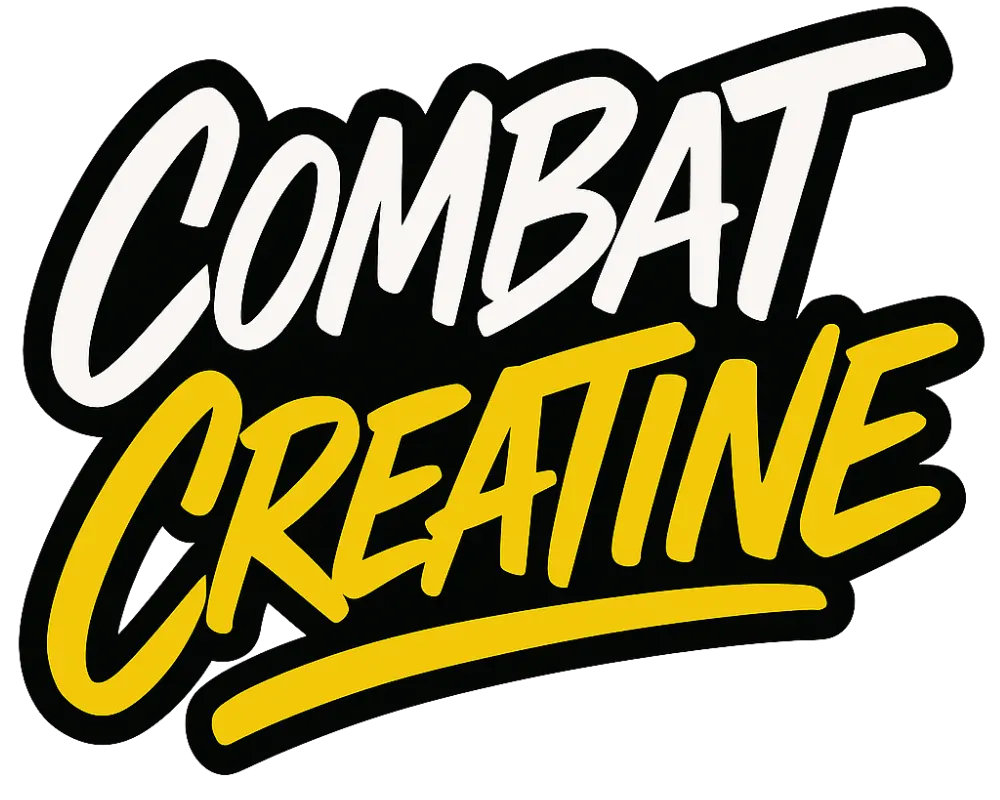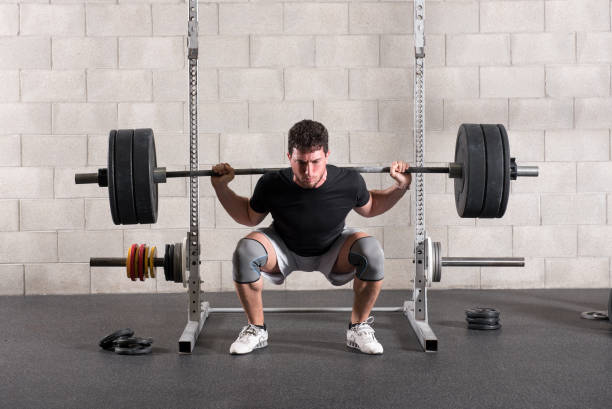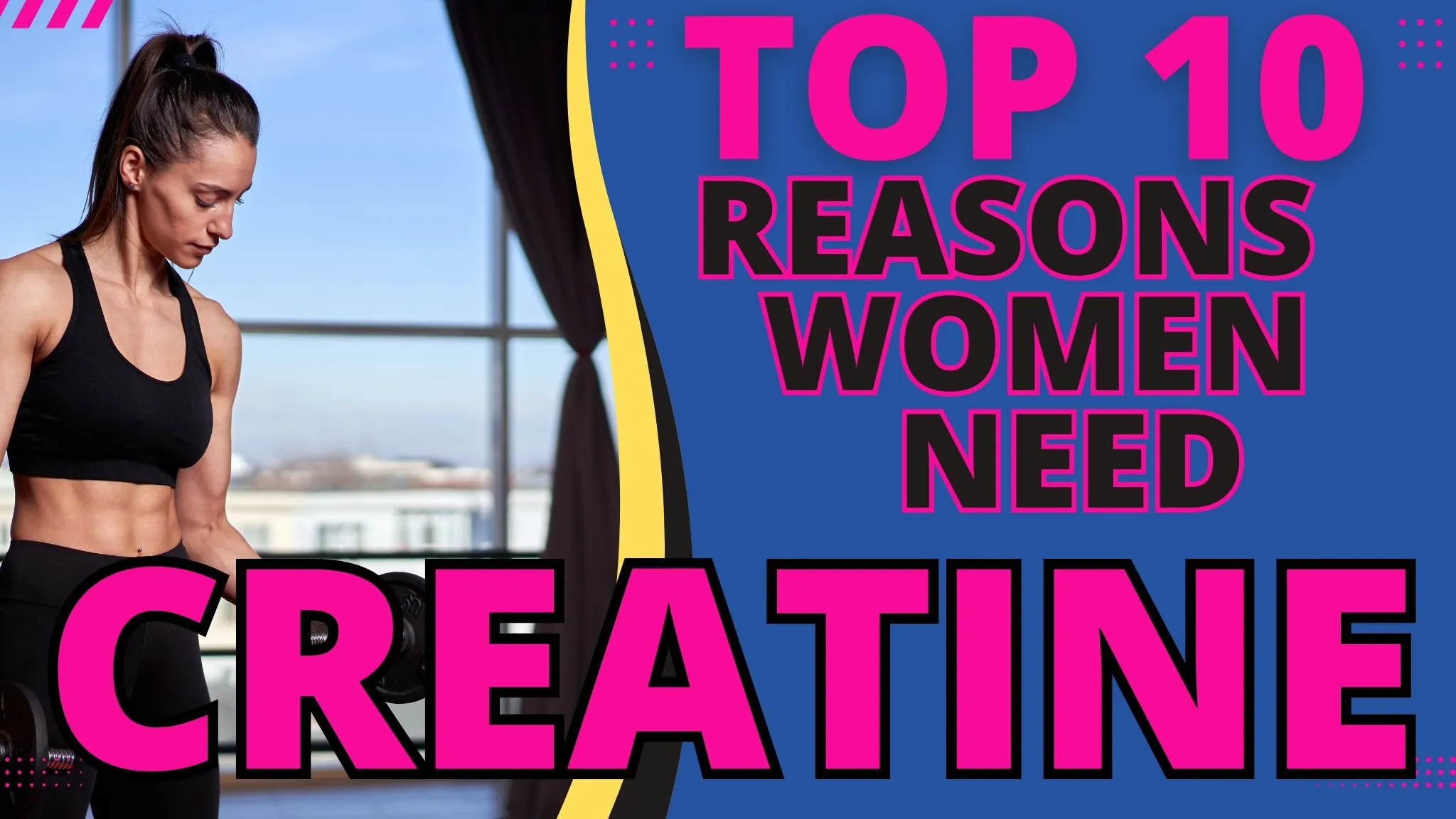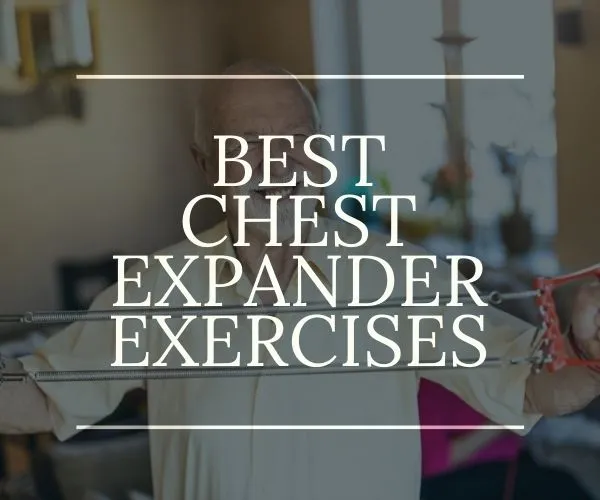9 Compound Leg Exercises | Best Compound Exercises For Lower Body
Build Strong Legs with the Best Compound Exercises
Your legs contain some of the biggest and most powerful muscles in your body. Developing strength in your lower body not only helps you perform better in sports, but also improves balance, mobility, and prevents injuries.
Compound leg exercises train multiple muscle groups at once, leading to greater strength and muscle gains compared to isolation movements. Keep reading to discover the 9 best compound leg exercises to incorporate into your training routine.
1. Barbell Back Squats
The king of all compound lower body exercises, barbell back squats should be a staple in every leg workout. This exercise engages your quadriceps, glutes, adductors, calves and core muscles.
How to do it:
- Stand with feet slightly wider than hip-width apart, holding a barbell across upper back. Engage core.
- Inhale, then bend knees and hips to lower into a squat until thighs are parallel or below parallel to floor.
- Exhale, drive through heels back to start position.
Form tips: Keep chest up, weight in heels. Don't round lower back. Go below parallel for most muscle activation. Use squat rack for safety.
2. Barbell Deadlifts
Deadlifts target the posterior chain - mainly your hamstrings, glutes and lower back. This exercise builds serious strength while torching calories.
How to do it:
- With flat back, hinge at hips to grab barbell with shoulder-width grip.
- Inhale, drive heels into floor to lift bar, extending hips forward until standing upright.
- Exhale, control bar back to floor with flat back.
Form tips: Keep bar close, flat back to avoid injury. Sumo stance hits inner thighs more.
3. Dumbbell Lunges
Lunges train legs unilaterally, improving stability and preventing muscle imbalances. Forward lunges target quads, while reverse lunges hit more glutes and hamstrings.
How to do it:
- Hold dumbbells at sides, stand with feet together.
- Step forward/backward into lunge, bending both knees 90 degrees.
- Push back to start position with front/back leg.
Form tips: Keep torso upright, step wide enough to get 90 degree bend in front and back knees.
4. Step Ups
Step ups blast quads, glutes, hamstrings and calves in a unilateral movement without heavy loading on the spine. Use a plyo box or bench adjusted to an appropriate height.
How to do it:
- Place right foot firmly on box.
- Stand on box by driving right hip and knee forward.
- Step back down with control.
- Repeat on left.
Form tips: Keep chest lifted and abs engaged throughout movement. Don't push off floor with trailing leg.
5. Hip Thrusts
The hip thrust specifically targets the gluteus maximus muscle. This exercise builds serious glute strength to improve performance in lifts like squats and deadlifts.
How to do it:
- Sit on floor with upper back on bench, knees bent 90 degrees.
- Squeeze glutes, drive hips up until body forms straight line.
- Slowly lower back down without touching floor.
Form tips: Place bar pad on hip bones for comfort. Don't arch lower back.
6. Leg Press
The leg press machine allows you to safely move serious weight with your lower body. This exercise builds quad and glute strength similar to squats.
How to do it:
- Sit in leg press machine with knees bent at 90 degree angles.
- Inhale, press weight forward by extending knees and hips.
- Exhale, return sled towards start position just above touching.
Form tips: Avoid locking out knees. Position feet low or high on plate to target quads or glutes.
7. Bulgarian Split Squats
This single leg exercise challenges your balance while working quads, glutes and hamstrings. The extended range of motion provides excellent muscle building benefits.
How to do it:
- Place top of back foot on bench behind you, balance on front foot.
- Slowly lower until front thigh is parallel to floor.
- Drive up through front heel back to start.
Form tips: Keep back upright, front knee tracking over toe. Modify with bodyweight until balanced.
8. RDL Straight Leg Deadlifts
The RDL or Romanian deadlift emphasizes the hamstrings by having a slight knee bend throughout versus a traditional deadlift. This builds hamstring flexibility and strength.
How to do it:
- With flat back, push hips back, lowering barbell towards feet.
- Keep slight knee bend until hamstrings stretched.
- Drive hips forward back to start position.
Form tips: Use overhand or mixed grip. Arms remain extended throughout movement.
9. Calf Raises
While calf raises aren't a compound movement, directly training your calves is important for increasing vertical jump, sprint speed, and lower body resilience against injuries.
How to do it:
- Stand with ball of foot on step or edge, heels hanging off.
- Raise heels up by extending ankles, hold 1 second squeeze.
- Slowly lower heels back down, stretch calf muscles.
Form tips: Increase range of motion focus by holding dumbbells for leverage.
Building strong, muscular legs requires intense training focused on compound movements.
Combine several of these exercises into your leg workouts 2-3 times per week to see excellent strength and hypertrophy results over time.
Stay consistent with progressive overload techniques to continue shocking your legs to new levels of development.
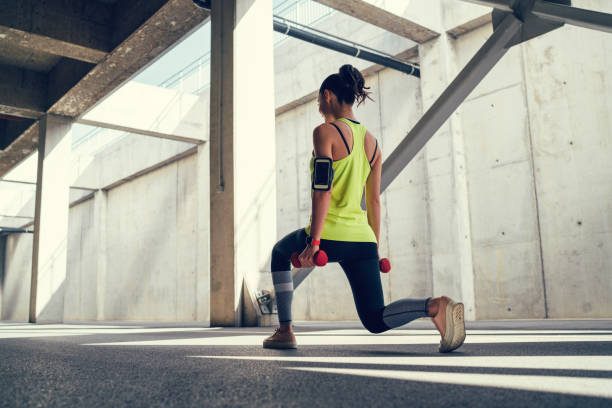
Programming Recommendations for Compound Leg Training
Now that you know the top compound exercises to incorporate, let’s discuss how to program these movements into an effective training routine to build muscle and continually increase leg strength.
Training Frequency
A good starting point is to train legs 2 times per week, with at least 72 hours between sessions for recovery. More advanced lifters can handle increased frequencies of 3-4 leg sessions weekly. Just be cautious of overtraining if exercising more frequently.
When programming multiple leg days during the week, it often works well to have one heavier, lower rep session focused on the main compound lifts. The other session can involve higher volume with moderate weights and incorporate more accessory work.
Sets and Reps
For compound leg exercises, the sweet spot for hypertrophy is the 6-15 rep range per set taken close to muscular failure. Those new to strength training will build muscle with even lower rep ranges from 1-5 per set due to neural adaptations.
Shoot for 3-5 working sets per exercise, tracking weights and reps each session to ensure continual progression as you get stronger.
Leaving 1-2 reps “in the tank” on your first sets allows you to push closer to failure on the final sets.
Rest times between 2-5 minutes maximize strength and hypertrophy gains versus shorter rests for legs. This allows better intra-set recovery for hitting the desired rep ranges consistently each set.
Shoot for at least 90 seconds rest minimum when lifting heavy.
Exercise Order
Generally the large, compound exercises should come first during your training session when muscles are less fatigued. Squats, deadlifts, leg presses are prime examples.
Accessory work like stiff leg deadlifts, lunges, leg extensions would follow multi-joint movements since they use less overall load and depend more on local muscular endurance.
Isolations like leg curls and calf raises should come last as smaller muscle groups since form depends more on optimal body positioning not impacted after larger lifts.
However, this can vary based on your specific goals too. For example, powerlifters may sequence the competition lifts (squat, bench, deadlift) in the order they will perform them at a meet after warmups.
Adding Variation
While certain exercises like squats and deadlifts should remain a consistent part of your program, don’t be afraid to periodically cycle in different variations to provide a new training stimulus.
For example, instead of traditional back squats, switch to buffalo bar, safety bar, or front squats. Rack pulls and deficit deadlifts also change the mechanics versus off the floor.
Unilateral exercises like lunges and split squats help prevent and address muscular imbalances that can develop. And they offer new challenges for strength and stability compared to bilateral lifts.
Changing your rep tempo/time under tension provides another way to increase or reduce emphasis on concentric, eccentric and isometric contractions for various benefits.
Deloading Strategically
As you progress through several weeks of hard leg training, periodically back off the volume or load to promote further adaptation. This could mean reducing working sets per exercise or lowering the training max and reps used for 1-2 weeks.
Deloading allows connective tissues stressed from compound lifts some recovery while avoiding losing muscular gains if training stops completely. Use this time to focus on form, muscle control and mind-muscle connection.
After a deload, you should bounce back stronger than ever on your main lifts, breaking through any strength plateaus. This sets the stage for further gains by gradually ramping volume back up going forward.

Sample 5 Day Compound Leg Split
Let’s outline 5 days of compound leg focused training to demonstrate effectively developing your wheels with the various recommendations mentioned.
Monday: Quads/Hamstrings
- Barbell Back Squats - 4x6-8
- Leg Press - 3x10-12
- Lying Leg Curls - 3x10-12
- Seated Calf Raises - 4x12-15
Wednesday: Glutes/Hamstrings
- Barbell Hip Thrusts - 4x8-10
- Stiff Leg Deadlifts - 4x8-10
- Hamstring Curls - 3x10-12
- Standing Calf Raises - 4x15-20
Friday: Heavy Lower Body
- Back Squats - 5x3-5
- Conventional Deadlifts - 4x3-5
- Leg Extensions - 3x10-12
Sunday: Unilateral Legs
- Reverse Lunges 3x8-10/leg
- Bulgarian Split Squats 3x8-10/leg
- Leg Press - 3x12-15
- Seated Calf Raise - 3x15-20
This split allows you to hammer your legs hard twice early in the week. Friday acts as a heavier, low volume strength day on big lifts. Sunday serves as an active recovery while targeting unilateral weak points.
Adjust volume, load and exercises as needed based on your recovery capacity and areas you need additional work on. But this outlines a framework for progressive overload using compound leg training for growth.
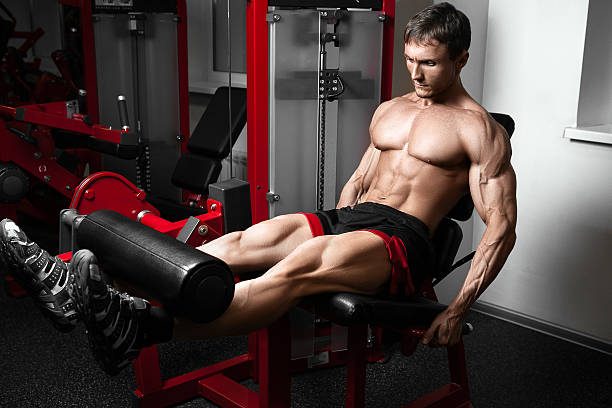
Integrate Isolation Exercises Too
While compound movements should make up the majority of your programming, isolation exercises have value as well. Machines and more targeted movements allow you to pinpoint specific muscles.
The quadriceps and hamstrings span multiple joints. Due to overlaps in function, multi-joint exercises may not fully train each of the four quad muscles or three hamstring muscles optimally.
Here are some of the top isolation exercises to incorporate:
Quads
- Leg Extensions
- Hack Squat
- Belt Squat
Hamstrings
- Lying Leg Curls
- Seated Leg Curls
- Glute Ham Raise
Glutes
- Hip Abduction
- Glute Kickback
- Pull Throughs
Isolations also serve as a nice way to increase volume on lagging groups by adding exercises after compounds. Just don’t make them the primary focus each session.

Sample Compound Leg Workouts
Let’s outline two sample leg workouts that incorporate the compound movements mentioned in this article.
Workout 1 – Lower Body Hypertrophy
Warmup: Foam Roll & Dynamic Stretches
Back Squats 4x8-10
Romanian Deadlifts 3x10-12
Walking Lunges 3x10-12 steps each leg
Leg Press 3x12-15
Leg Curls 2x12-15
Calf Raise Circuit Seated Calf Raise x12 Standing Calf Raise x12 Repeat 3 Times
Workout 2 – Leg Strength & Power
Warmup: Foam Roll & Dynamic Stretches
Back Squats – 5x5
Stiff Leg Deadlifts – 4x6
Pause Front Squats – 4x3 (pause 2 seconds in bottom)
Barbell Hip Thrusts – 4x5
Depth Jumps – 4x5 (Use plyo box)
Calf Raises Seated – 3x8-10 Standing – 3x12-15
There are countless ways to structure your compound leg training split over the week. Hopefully these examples demonstrate effectively programming major compound lifts along with targeted isolation work for maximum lower body gains.\
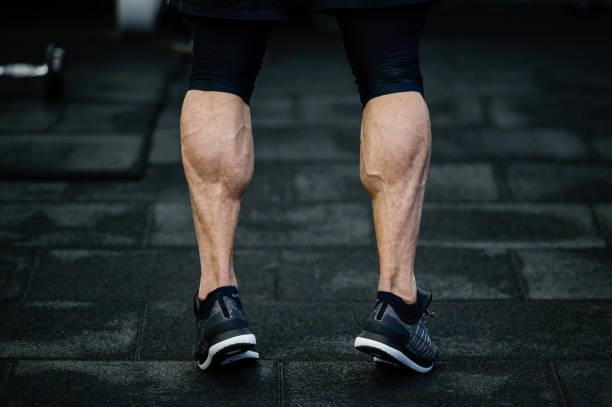
Conclusion
It’s time to wrap up this epic guide on getting the most out of compound leg exercises. Here’s a quick recap:
- Incorporate both compound and isolation lifts
- Train legs 2-4 days weekly
- Shoot for sets in the 6-15 rep range close to failure
- Use 3-5 working sets per exercise
- Sequence compound lifts before isolation moves
- Squats, deadlifts and lunges should be exercise staples
- Strategically use deloads, variation and periodization
Building an impressive set of well-developed wheels that rival the biggest bodybuilders takes relentless dedication through CONSISTENT, PROGRESSIVE leg training centered around compound lifts.
Apply these proven recommendations and keep pushing your physical limits in the gym if you want to take your lower body to the next level! Just remember, massive quads and hamstrings don’t grow overnight. Stick with the process for several months and years to experience truly awe-inspiring strength and mass gains.
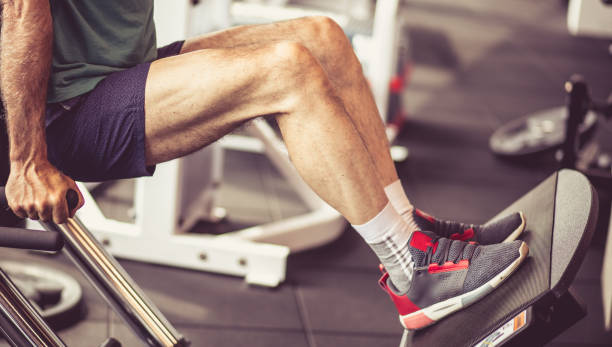
Frequently Asked Questions
What are compound leg exercises?
Compound leg exercises engage multiple muscle groups simultaneously, making them efficient for building strength and muscle mass in the lower body.
What are compound exercises?
Compound exercises involve multiple joints and muscle groups, providing overall strength and muscle mass gains.
What are the best compound leg exercises?
One of the best compound leg exercises is the barbell squat, targeting the quadriceps, glutes, hamstrings, and core for a comprehensive lower body workout.
What are the best compound exercises?
Compound exercises for legs include the barbell squat, deadlift, lunges, step-ups, and leg press, effectively engaging multiple muscle groups.
What are isolation leg exercises?
Isolation leg exercises target specific muscles in the legs, such as the quadriceps, hamstrings, and calves, without involving other muscle groups.
What are exercises for strength?
Exercises for strength include compound movements like squats, deadlifts, bench presses, and rows, as well as isolation exercises targeting specific muscle groups.
What are hamstring exercises?
Hamstring exercises focus on the muscles on the back of the thigh, including movements like deadlifts, hamstring curls, and glute-ham raises.
What are upper body exercises?
Upper body exercises target the muscles in the chest, back, shoulders, and arms, including movements like bench presses, pull-ups, rows, and shoulder presses.
What are body workout exercises?
Body workout exercises engage various muscle groups throughout the body, including the upper body, lower body, and core, such as squats, lunges, push-ups, and planks.
What are lower body workout exercises?
Lower body workout exercises target the muscles in the legs, hips, and glutes, including movements like squats, deadlifts, lunges, leg presses, and calf raises.
What is a workout routine?
A workout routine is a structured plan outlining specific exercises, sets, reps, and rest periods for a training session, helping individuals achieve fitness goals efficiently.
What are glute exercises?
Glute exercises target the muscles in the buttocks, such as hip thrusts, glute bridges, lunges, and squats, for strength and definition.
What is a compound workout?
A compound workout consists of exercises engaging multiple muscle groups simultaneously, providing a comprehensive and efficient strength training session.
What are exercises for a strong lower body?
Exercises for a strong lower body include compound movements like squats, deadlifts, lunges, and step-ups, as well as isolation exercises targeting specific leg muscles.
What are compound lower body exercises?
Compound lower body exercises engage the muscles in the legs, hips, and glutes while involving multiple joints, including squats, deadlifts, lunges, and step-ups.
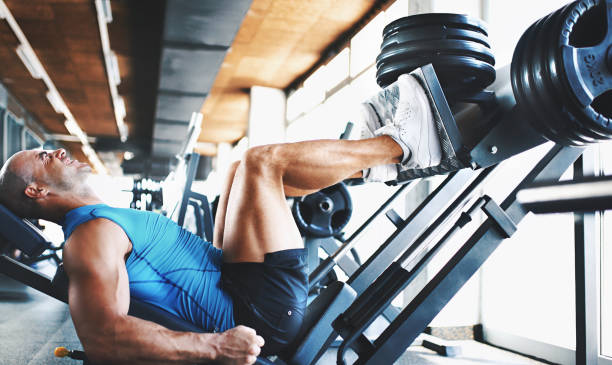
My Experience With Compound Exercises For Legs
I've been strength training for over 10 years now, but when I first started out, I made the mistake of focusing too much on isolation exercises.
My workouts targeted my quads, hamstrings and calves separately without much attention on compound lifts that trained my entire lower body.
Sure, I got into decent shape, but my functional strength was lacking.
Embracing The Best Compound Exercises For Legs
That all changed when I began incorporating more squats, deadlifts, and lunges into my routines. The first time I back squatted 135 pounds for sets across, I was sore for days!
But I realized then how much full-body engagement and lower body muscle recruitment these compound exercises created. My quads, glutes and hamstrings worked together to drive some serious weight.
I had to swallow my ego and drop the weight at first to really dial in my form. Proper coaching and cues like "bend your knees to sit back into the squat" and "squeeze your glutes at the top" helped me engage my muscles correctly.
What I lacked in brute strength initially, I made up for by really feeling that mind-muscle connection to target the intended groups.

The Benefits Of Compound Lifting Quickly Added Up
The functional benefits of compound lifting became obvious pretty fast. My lower body strength skyrocketed as I progressively overloaded the big lifts each session. Carrying groceries or lifting heavy objects became trivial tasks.
And my athletic performance improved from the increased power output I could now generate.
While high rep, hypertrophy style training certainly has its place too, lifting heavier weights in lower rep ranges taught me how to properly brace my core and stand strong. My confidence carrying greater loads and moving freely through space grew exponentially from these full-body compound exercises.
What surprised me most was how sculpted and defined my individual leg muscles became through the months, despite not directly targeting them. Challenging multi-joint movements forced vast overall lower body adaptation. I added noticeable size to my quads just through squat and deadlift variations alone.
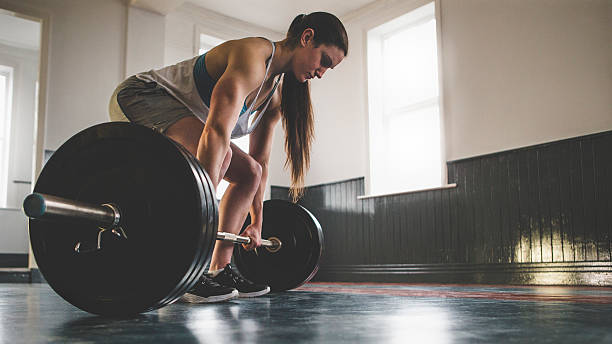
Now I Structure My Programs Around Compound Lifts
These days, I center my workouts around a core group of compound exercises like squats, deadlifts, lunges and leg presses. I simply can't beat big basics for simultaneously building balanced strength and muscle mass.
I make sure to hit between 8-15 quality reps on these lifts before incorporating isolation movements.
Exercises like the leg extension or lying leg curl fill gaps by providing additional volume to specific heads of a muscle group. And I certainly still train calves directly! But performing compound movements forms the foundation necessary for developing an impressively strong lower half.
I've come to appreciate that it's not about lifting the most weight possible, but rather feeling that deep burn and engagement demanded by compound lifts.
Sometimes that means humbling myself to lighter loads, or extending a set with extra partial reps when my legs feel shot.
Training legs is rarely fun in the moment, but nothing satisfies me more than seeing continued growth week to week from these brutal workouts.
I still have a long way to go before I'm satisfied, but embracing compound exercises showed me the true path toward building the leg strength necessary to support my highest athletic goals.
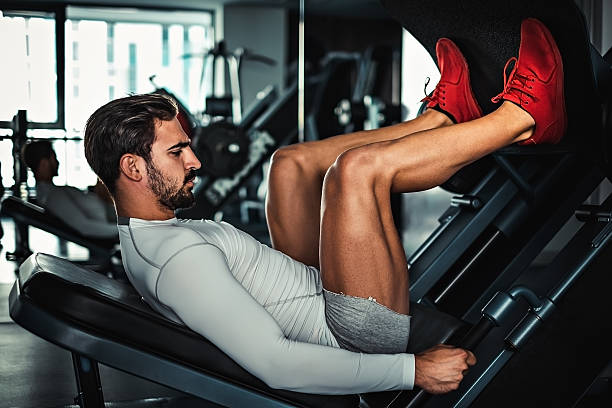
References
- Barbell Back Squats
- Reference: Schoenfeld, B. J., Contreras, B., Tiryaki-Sonmez, G., Wilson, J. M., Kolber, M. J., & Peterson, M. D. (2015). Regional Differences in Muscle Activation During Hamstrings Exercise. Journal of Strength and Conditioning Research, 29(1), 159–164. https://pubmed.ncbi.nlm.nih.gov/24918181/
- Barbell Deadlifts
- Reference: Swinton, P. A., Stewart, A., Agouris, I., Keogh, J. W., & Lloyd, R. (2011). A Biomechanical Analysis of Straight and Hexagonal Barbell Deadlifts Using Submaximal Loads. Journal of Strength and Conditioning Research, 25(7), 2000–2009. https://pubmed.ncbi.nlm.nih.gov/21701282/
- Dumbbell Lunges
- Reference: Lorenz, D. S., & Reiman, M. P. (2011). The Role and Implementation of Eccentric Training in Athletic Rehabilitation: Tendinopathy, Hamstring Strains, and ACL Reconstruction. International Journal of Sports Physical Therapy, 6(1), 27–44. https://www.ncbi.nlm.nih.gov/pmc/articles/PMC3201064/
- Step Ups
- Reference: McBride, J. M., Blow, D., Kirby, T. J., Haines, T. L., Dayne, A. M., & Triplett, N. T. (2010). Relationship Between Maximal Squat Strength and Five, Ten, and Forty Yard Sprint Times. Journal of Strength and Conditioning Research, 24(1), 120–126. https://pubmed.ncbi.nlm.nih.gov/19924014/
- Hip Thrusts
- Reference: Contreras, B., Vigotsky, A. D., Schoenfeld, B. J., Beardsley, C., & Cronin, J. (2017). A Comparison of Gluteus Maximus, Biceps Femoris, and Vastus Lateralis Electromyographic Activity in the Back Squat and Barbell Hip Thrust Exercises. Journal of Applied Biomechanics, 33(2), 83–89. https://pubmed.ncbi.nlm.nih.gov/27941492/
- Leg Press
- Reference: Ribeiro, A. S., Romanzini, M., Schoenfeld, B. J., Souza, M. F., Avelar, A., Cyrino, E. S., & de Salles, B. F. (2019). Effects of Different Resistance Training Frequencies on Strength, Power, Muscle Hypertrophy, and Functional Performance in Healthy Older Individuals. Journal of Strength and Conditioning Research, 33, S122–S129. https://pubmed.ncbi.nlm.nih.gov/30986762/
- Bulgarian Split Squats
- Reference: Makaruk, H., Winchester, J. B., & Sadowski, J. (2011). The Effect of Squat Depth on Multiarticular Muscle Activation in Collegiate Cross-Country Runners. Journal of Strength and Conditioning Research, 25(8), 2121–2128. https://pubmed.ncbi.nlm.nih.gov/21654561/
- RDL Straight Leg Deadlifts
- Reference: Ebben, W. P., & Jensen, R. L. (2002). Electromyographic and Kinematic Analysis of Traditional and Nontraditional Plyometric Exercises. Journal of Strength and Conditioning Research, 16(4), 553–555. https://pubmed.ncbi.nlm.nih.gov/12423182/
- Calf Raises
- Reference: Ema, R., Saito, I., Akagi, R., & Kanehisa, H. (2016). Inhomogeneous Muscle Activities in the Lower Leg During Plantar Flexion Against Different Knee Positions: An Intramuscular Electromyography Study. Journal of Applied Biomechanics, 32(4), 349–355. https://pubmed.ncbi.nlm.nih.gov/27096344/
For More Training Advice + Diet and Lifestyle visit us Combat Creatine
PS: Make sure you check out the rest of our Training Guides:
Creatine
Creatine Supplements Ultimate Guide
Creatine Supplementation Side Effects
Best Creatine Monohydrate Gummies Review: Top 10 Best Creatine Gummies
Triceps
12 Best Long Head Tricep Exercises + Tricep Workout Ideas
Top 17 Tricep Extension Exercises | Triceps Extension Variations Guide
Perfecting the Triceps Pushdown: Tricep Pushdown for Upper Body Strength
10 Best Medial Head Tricep Exercises -Combat Creatine10 Best Lateral Head Tricep ExercisesThe Best Triceps Stretches to Loosen and Improve Flexibility
Understanding Triceps Tendonitis: Causes, Diagnosis, and Treatment for Elbow Pain
Tricep Dips Exercise Guide: Master The Triceps Dip
30 Best Tricep Exercises | Review The Best Triceps Exercises
Are Triceps Push or Pull? Push-Pull Workout
Biceps
12 Best Bicep Tendonitis Exercises | Biceps Tendon Treatment
The 10 Best Kettlebell Bicep Exercises for Bigger, Stronger Arms
The 14 Best Resistance Band Bicep Exercises | Top Biceps Resistance Band Exercises
The 14 Best Short Head Biceps Exercises | Short Head Bicep Exercise Workout
17 Best Long Head Bicep Exercises | Top Biceps Exercise
The 20 Best Bicep Exercises | Best Biceps Exercise & Bicep Workout
Get Stronger Biceps with a Bicep Curl Machine
Chest
13 Cable Chest Exercises to Build Bigger Pecs
The Spoto Press: How This Unique Bench Press Variation Can Boost Your Bench
The 10 Best Chest Exercises for Building Muscle
10 Best Dumbbell Chest Exercises for Building Your Pecs
The 5 Best Chest Exercise Machines for Maximum Growth in 2024
5 Best Compound Chest Exercises for Building a Bigger Chest
16 Best Kettlebell Chest Exercises: Pump Up Your Pecs
5 Best Chest Workout Machines for Maximum Muscle Growth
6 TRX Chest Exercises for a Bigger Chest - Best TRX Workout!
14 Common Chest Expander Exercises
Back
10 Best Cable Back Workout Exercises
10 Best Kettlebell Back Exercises & Back Workout
5 Best Calisthenics Back Exercises + Calisthenics Back Workout
5 Best Lower Back Exercises + Best Back Exercises Machines
Top 10 TRX Exercises To Build A Stronger Back
10 Best Resistance Band Back Exercises + Back Workout
11 Best Landmine Exercises For Back & Upper Body
15 Best Smith Machine Back Exercises
Top 3 Back Exercises For A Stronger Back: Build Size And Strength
The Complete Helms Row Guide | Form, Muscles Worked, and Benefits
How to Do the Lat Spread Pose Like a Pro Bodybuilder
Shoulders
The 10 Best Cable Shoulder Workouts & Cable Shoulder Exercises
Shoulder Impingement Exercises For Shoulder Impingement Syndrome
8 Best Shoulder Bursitis Exercises
16 Best Cable Shoulder Exercises To Build Muscle & Shape Delts
